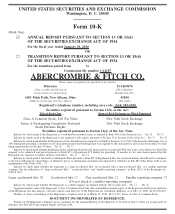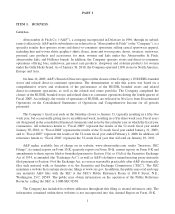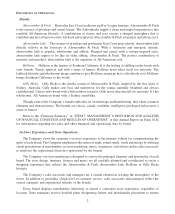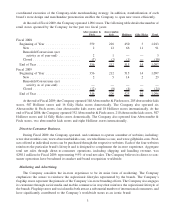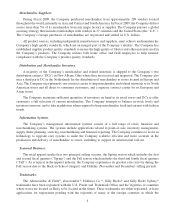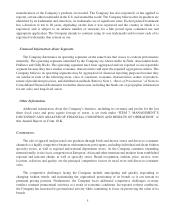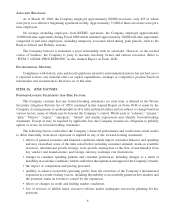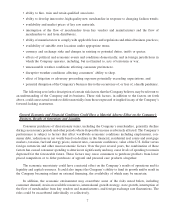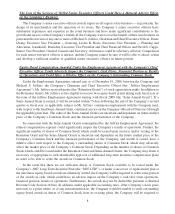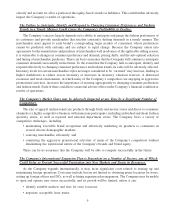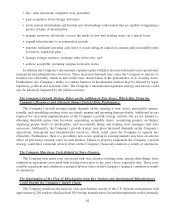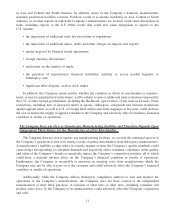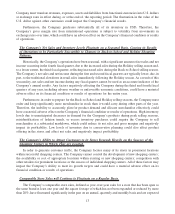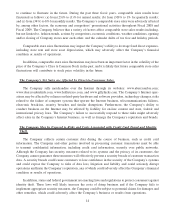Abercrombie & Fitch 2009 Annual Report Download - page 5
Download and view the complete annual report
Please find page 5 of the 2009 Abercrombie & Fitch annual report below. You can navigate through the pages in the report by either clicking on the pages listed below, or by using the keyword search tool below to find specific information within the annual report.Merchandise Suppliers.
During Fiscal 2009, the Company purchased merchandise from approximately 209 vendors located
throughout the world; primarily in Asia and Central and South America. In Fiscal 2009, the Company did not
source more than 5% of its merchandise from any single factory or supplier. The Company pursues a global
sourcing strategy that includes relationships with vendors in 37 countries and the United States (the “U.S.”).
The Company’s foreign purchases of merchandise are negotiated and settled in U.S. dollars.
All product sources, including independent manufacturers and suppliers, must achieve and maintain the
Company’s high quality standards, which are an integral part of the Company’s identity. The Company has
established supplier product quality standards to ensure the high quality of fabrics and other materials used in
the Company’s products. The Company utilizes both home office and field employees to help monitor
compliance with the Company’s product quality standards.
Distribution and Merchandise Inventory.
A majority of the Company’s merchandise and related materials is shipped to the Company’s two
distribution centers (“DCs”) in New Albany, Ohio where they are received and inspected. The Company also
uses a third-party DC in the Netherlands for the distribution of merchandise to stores located in Europe and
Asia. The Company uses primarily one contract carrier to ship merchandise and related materials to its North
American stores and all direct-to-consumer customers, and a separate contract carrier for its European and
Asian stores.
The Company maintains sufficient quantities of inventory on hand in its retail stores and DCs to offer
customers a full selection of current merchandise. The Company attempts to balance in-stock levels and
inventory turnover, and to take markdowns when required to keep merchandise fresh and current with fashion
trends.
Information Systems.
The Company’s management information systems consist of a full range of retail, financial and
merchandising systems. The systems include applications related to point-of-sale, inventory management,
supply chain, planning, sourcing, merchandising and financial reporting. The Company continues to invest in
technology to upgrade core systems to make the Company scalable, efficient and more accurate in the
production and delivery of merchandise to stores, including to support its international roll-out.
Seasonal Business.
The retail apparel market has two principal selling seasons, the Spring season which includes the first
and second fiscal quarters (“Spring”) and the Fall season which includes the third and fourth fiscal quarters
(“Fall”). As is typical in the apparel industry, the Company experiences its greatest sales activity during the
Fall season due to the Back-to-School (August) and Holiday (November and December) selling periods.
Trademarks.
The Abercrombie & Fitch», abercrombie», Hollister Co.», Gilly Hicks»and Gilly Hicks Sydney»
trademarks have been registered with the U.S. Patent and Trademark Office and the registries of countries
where stores are located or likely to be located in the future. These trademarks are either registered, or have
applications for registration pending with the registries of many of the foreign countries in which the
4

